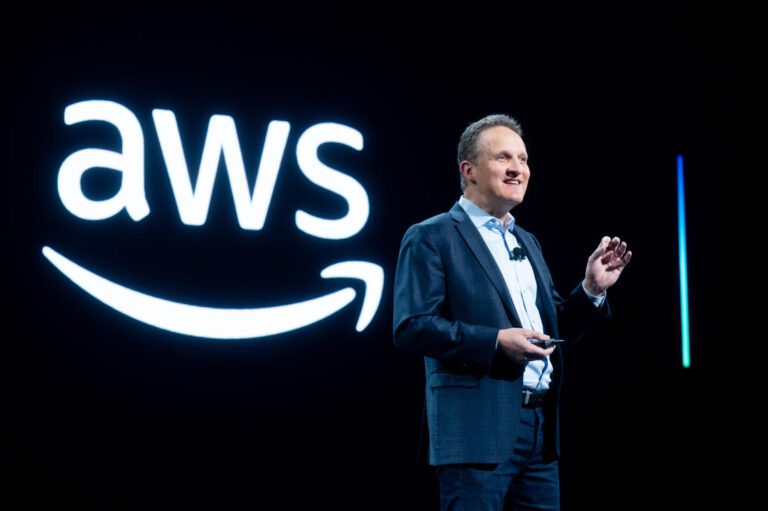Amazon (AMZN) is giving its huge Amazon Web Services (AWS) data centers a facelift. The company announced that it is improving the efficiency, availability and design of its massive computing facilities to keep them operational for its customers and provide them with the kind of processing power they need to run new business applications. Generative AI.
“We have made many improvements in terms of simplifying our electrical and mechanical design that will further improve availability for our customers,” Prasad Kalyanaraman, vice president of infrastructure services at AWS, told Yahoo Finance.
“Generative AI requires a significant amount of power for these racks and for these chips. And we also innovated in the design of the power delivery to these servers,” he added.
AWS is Amazon’s most profitable business unit. The segment brought in $90.7 billion in 2023, less than the retail division’s $484 billion in revenue. Operating profit, however, reached $24.6 billion, eclipsing Amazon’s retail operating profit of $12.2 billion.
Any changes to AWS infrastructure will certainly impact the company’s bottom line over time. AWS is the world’s largest cloud service provider, ahead of Microsoft (MSFT) and Google in third position (GOOG, GOOGLE). And anything that improves the availability and performance of the cloud business has the potential to attract more customers while ensuring that existing users don’t flee to Amazon’s competitors.
Amazon says the latest updates include simplified electrical and mechanical designs for its data centers that ensure infrastructure availability above 99%. In other words, the company has streamlined its hardware to ensure that its data centers remain operational without any problems.
The tech giant says it’s also preparing for Nvidia’s (NVDA) upcoming Blackwell chips by equipping its data centers with liquid cooling capabilities. Data centers typically use air-cooled servers that dissipate the heat generated by their chips and servers using fans. But according to Kalyanaraman, servers running Nvidia’s Blackwell chips or Amazon’s Trainium 2 chips get so hot that the only way to cool them is with a liquid cooling system.
You can think of a liquid cooling system like a car’s radiator system. Typically, coolant flows through a series of pipes to a block attached to a server chip. The heat generated by the chip is transferred to the block and then to the coolant, which then passes through a radiator where it is cooled and recirculated back to the chip.
Heat is a major problem for computer components. If a system gets too hot, it will slow down or shut down completely to prevent serious damage. It is therefore essential for cloud computing companies to keep new AI servers cool.

